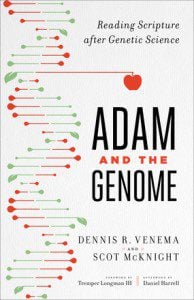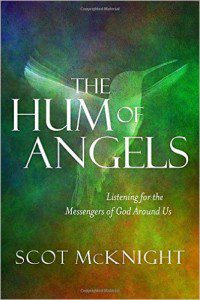 I am so proud of my former student, Sam Lamerson, who has been named President of Knox Theological Seminary in Ft Lauderdale.
I am so proud of my former student, Sam Lamerson, who has been named President of Knox Theological Seminary in Ft Lauderdale.
Good for Samaritan’s Purse:
Smart Money magazine has named Samaritan’s Purse the most efficient religious charity numerous times, and the group maintains a reputation of being among the first to combat the worst public health crises around the world.
“Given the remote and hard-to-reach areas they work in, there’s been many instances in the past where we’ve first heard of specific suspected clusters of illnesses through them,” Rima Khabbaz, the CDC’s deputy director for infectious diseases, said of NGOs such as Samaritan’s Purse. “They are no doubt very important partners in our global public health work. Not infrequently, [the] first unconfirmed reports reach the public health community through them.”
Michael Osterholm, director of the Center for Infectious Disease Research and Policy at the University of Minnesota, said in many parts of the world, groups such as Samaritan’s Purse and Doctors Without Borders “are the safety net for global health.” He added: “They are the ones in the areas of war and civil unrest.”
Yes, Tom Hanks has an app that makes your keyboard sound like an old fashioned typewriter. (HT: MS)
Tom Hanks has a new app out. You read that correctly, not a movie, but an app. It’s called theHanx Writer, and it is a technological testament to a serious disease that afflicts the poor man. Call it typewriter-itis.
Hanx Writer turns your iPad into an old-school manual typewriter. It replicates the thwack-thwack sound of metal stamping on paper and the ding-clunk-fripp of reaching the end of one line and starting a new one. The app is free in Apple’s App Store, though additional typewriter fonts and sounds cost $2.99 each.
Kris and I refer to my library as the dungeon (in a mostly unfinished basement), so we both found this set of private, cool, fabulous studios to be … well, a source of “wouldn’t that be nice!”
Tim Suttle reviews Chris Smith’s Slow Church.
Very good advice from Nancy Beach.
Huffington urges us to first determine through brutal honesty and experimentation how many hours of sleep we need each night to thrive. This is where a whole lot of denial or pride step in – we want to be known as the Energizer Bunny who can flourish with a mere 4 or 5 hours on a regular basis. But that is actually not sustainable and incredibly unhealthy over the long haul. The average range is between 7 and 9 hours per night. Once we know our “sleep number” (and I’m not talking about those magic mattresses), we back up our wake-up call and establish a bedtime deadline. A deadline we will treat like a hugely important meeting. Because it is.
Roy Ciampa calls out those who are misrepresenting Victoria Beeching, and Roy’s right:
One wonders about those who proclaim that Beeching has switched to (or revealed she always held to) a religion of a God who says “anything goes” and who does not hold us accountable to any serious moral standards, if they themselves would like to see headlines like “Robert George and Plato’s Third Form of Athiesm” followed by arguments suggesting that they evidently believe in a god (lowercase because this is not the true God) who “makes no stringent moral demands” and thinks it’s fine “if we do pretty much as we please, whatever we please,” including publishing egregious misrepresentations of other people’s positions and assassinating the character of people who espouse views we find offensive.
Jack is right; Mark Driscoll needs to employ a prophet and the prophet gets full-time tenure and the preaching platform once every seven weeks.
For 13 years I’ve worked at a college that lies a stone’s throw from Mars Hill Church, where Mark Driscoll holds court. Now that court is crumbling amidst charges offinancial dishonesty and abuse of power.
Driscoll has said he’s changing. No more social media. No more funneling funds to become a bestselling author. No more “angry young prophet.” More accountability to trusted friends.
The first three suggestions are absolutely necessary. It’s the fourth suggestion — more accountability to friends — that I don’t buy. Driscoll needs something more serious, more relentless. And I’ve got it! He needs to hire a prophet of his own!
I’m talking about someone who keeps the church honest without an ounce of risk for speaking the truth. Think about it. Lots of churches have boards whose members sit in the pocket of the pastor. Like Mars Hill. By now, we’ve heard about the nondisclosure statements that departing leaders at Mars Hill are told to sign. It’s pretty clear that dissenting voices aren’t especially welcome at Mars Hill.
So hire a prophet! That’s right. Driscoll should hire his very own prophet. But what kind of prophet?
Mary DeMuth‘s “coaching-them-through-the-dating-phase” post:
How has this played out in our lives where the rubber hit the dating road?
We err on the side of communication, even over-communication. We ask great questions. We get to know the people our kids date. We include them in our family’s life. We foster an open relationship with our kids so they can talk to us about anything. We let them date. And then we coach from the sidelines.
Eventually our teens will shift into adulthood, and our coaching role will remain important, though less so. Our goal has always been to do life alongside our kids in such a way that we invite relationship (that they actually WANT to hang out with us). This means, too, that we share our own sin, talk about the ways we wish we could’ve done dating better, and share stories of our foibles.
Ultimately, though, we must relinquish our penchant for control at the feet of Jesus, asking Him to please speak to our kids, give them awesome counsel, and woo them to Himself. Our job in this phase is to love our kids, no matter what choices they make, willing to speak the truth in love, but always falling back on love as the undergirding of their lives, remembering that God’s kindness ushers in repentance, not harsh control.
Speaking of parenting, what does it cost to hire a babysitter in NYC?
It seems like a parental dream: A college-educated babysitter shows up, leads your kids through homework, dinnertime and a masterpiece art project, cleans the house and then gives you a report card of how the evening went.
This dream can be a reality thanks to high-end babysitting services in New York City, but it comes at a price — up to $33 an hour.
[One has a mind to ask what it costs to hire a carpenter or plumber or electrician?]
Howard Snyder’s wonderful sketch of Bishop Whipple.
There is much more to the story. The point here: Within all the 400-year dreary, often bloody history of American Indians being forced from their native lands and ways of life, a small parade of Christians like Bishop Henry Whipple passes by as conscientious exceptions. There were Christian missionaries for example who protested injustices at the time of Congress’ Indian Removal Act of 1830, and others, both earlier and later.
Meanwhile, the Department (later Bureau) of Indian Affairs remained largely immune from reform. When U. S. Grant came into the presidency he tried appointing genuine Christians as Indian agents, and his so-called “Quaker Policy” brought some improvement here and there. Yet, as Ralph Andrist notes, “before [Grant’s] term ended . . . both his Secretary of the Interior and Secretary of War [were] forced out of office because of corruption in connection with Indian affairs.” The hard fact remained that “no Quaker Policy or other reform . . . was going to save the Indian as long as he stood in the way of Western pioneers” (The Long Death: The Last Days of the Plains Indians, 169).
But people like Henry Whipple, “Lincoln’s Bishop,” are also part of the story as pricks to the conscience—yesterday and today.
Tats have changed, by Edwin Leap:
Ink is everywhere these days, and I don’t mean on newspapers or in magazines. Tattoos are far more pervasive than I can ever recall in my fifty years. There was a time, when I was young, that boys were awestruck by the old Navy veterans, whose arms bore anchors, and the Marines with Semper Fi across their battle scarred chests. Occasionally, when we saw them out in the sun, working in their yards, we would get a glimpse of hula girls or things even more thrilling, as we imagined their adventures in combat (and otherwise).
I also remember that when I was young, tattoos were scandalous things. The ladies at the mission tea were shocked and the good people of the neighborhood said “tsk, tsk,” and kept an eye on those folks whose libertine morals permitted them to have their skin marked. Tattoos were, almost universally (and often falsely), associated with low morals. Even the tattooed would, later in life, attempt to have them removed, or wear clothes that covered their youthful decisions.
But things have changed. Tattoos can be found on the usual suspects, of course; soldiers, sailors, airmen, bikers, gangsters and such. But they’re also widely seen on college students and high school teachers, doctors and accountants, athletes and musicians, grandmas and grandpas, beauty pageant participants, atheists and Christians and everyone in between….
Why are there so many tattoos now? Some of it is clearly a statement of individuality, or a love of art, symbol and story. But those of us who wonder should remember that while a few are tattooed for shock value, many are just using their bodies to tell us stories, to share emotions. They’re wearing their pain, their loss, their hopes, their values, their dreams and fantasies.
And this: No small number are using the ink to remake themselves; to paint over the memories, struggles or perceived inadequacies that plague them, and to thereby redesign their image in a way more to their own liking.
It’s easy to condemn what we don’t understand or would never do ourselves. But maybe we should pause to consider the messages that tattoos are sending. In the process, we might love and understand our neighbors just a little better than before.
And all that ink might just make sense at last.
Do the universities destroy faith? This surprising study suggests that is not what is happening:
But a new study suggests this stereotype isn’t true—in fact, college might make people more likely to be religious.
“The core finding is that the association between graduating from college and religious disaffiliation has changed drastically across generations,” said Philip Schwadel, the study’s author and a professor at the University of Nebraska-Lincoln. For people who were born in the 1920s and ’30s, the godless-college-grad stereotype is somewhat true: They were twice as likely as their uneducated peers to be religionless, not identifying with a particular church or synagogue or other religious institution.
But over time, that trend changed. “For those people who were born in the 1960s, there’s really no difference between the college-educated and the non-college-educated in terms of their likelihood of disaffiliating from religion,” Schwadel said. “And for those born in the 1970s, it’s actually the non-college-educated who are relatively likely to disaffiliate.”…
Even so, these findings are important: They offer one more piece of evidence that college grads are society’s best defenders of traditional institutions. People with bachelor’s degrees are more likely to get married, more likely to marry each other, and more likely to wait until after their wedding to have babies.
They’re also more likely to live 1950s, Leave It to Beaver-esque lives. “College-educated people are joiners,” Schwadel said. “They’re more likely to participate in civic groups, to volunteer in their community. What we’re seeing is this moving into religion, too—not necessarily to hold all these different kinds of beliefs, but at least to participate in a nominal sense.”











